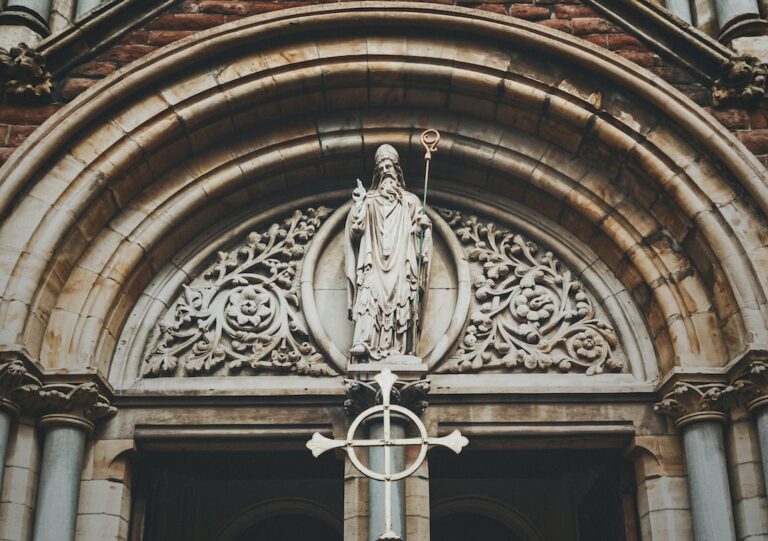Mythology Symbolism – Everything You Need To Know

Mythology symbolism refers to the use of symbols in myths, legends, and folklore to convey deeper meanings and messages. Symbols are powerful tools that have been used by humans throughout history to communicate complex ideas and emotions. Understanding mythology symbolism is important because it allows us to delve into the rich cultural heritage of different societies, explore the depths of human imagination, and gain insights into the universal themes and archetypes that shape our collective consciousness.
The Importance of Mythology Symbolism in Different Cultures
Mythology symbolism plays a crucial role in different cultures around the world. It serves as a means of preserving cultural traditions, beliefs, and values. Symbols are used to represent abstract concepts, such as love, courage, wisdom, and fertility, which are central to the cultural identity of a society. For example, in ancient Egyptian culture, the symbol of the Ankh represented eternal life and was often depicted in tombs and temples.
Symbols also serve as a way to connect individuals with their cultural heritage and provide a sense of belonging. They can evoke strong emotions and create a shared understanding among members of a community. For instance, in Native American cultures, the dreamcatcher symbolizes protection from bad dreams and is often hung above beds or in homes.
The Role of Mythology Symbolism in Literature and Art
Mythology symbolism has been widely used in literature and art throughout history. Writers and artists often draw inspiration from myths and legends to create compelling narratives or visually stunning artworks. Symbols are employed to add depth and layers of meaning to their works.
In literature, mythology symbolism can be found in various forms such as allegories, metaphors, and motifs. For example, in William Shakespeare’s play “Romeo and Juliet,” the recurring motif of light and darkness symbolizes the contrast between love and hate, life and death.
In art, mythology symbolism is used to convey specific messages or evoke certain emotions. Artists often incorporate symbols into their paintings, sculptures, and other forms of visual art. For instance, in Leonardo da Vinci’s famous painting “The Last Supper,” the symbol of the bread and wine represents the body and blood of Christ in Christian mythology.
The Different Types of Mythology Symbols and Their Meanings
There are various types of mythology symbols, each with its own unique meaning and significance. Some common types of mythology symbols include animals, plants, celestial bodies, elements, and mythical creatures.
Animals often symbolize certain qualities or characteristics. For example, the lion is often associated with strength and courage, while the owl is often associated with wisdom and knowledge.
Plants can represent growth, fertility, or healing. The lotus flower, for instance, is a symbol of purity and enlightenment in many Eastern cultures.
Celestial bodies such as the sun, moon, and stars are often used to represent cosmic forces or divine powers. The sun is often associated with life and vitality, while the moon is often associated with femininity and intuition.
Elements such as fire, water, earth, and air can symbolize different aspects of life or natural forces. Fire can represent passion or transformation, while water can represent emotions or purification.
Mythical creatures like dragons, unicorns, and phoenixes are often used to symbolize power, magic, or transcendence. These creatures are often found in folklore and legends from different cultures around the world.
The Significance of Mythology Symbols in Ancient Civilizations
In ancient civilizations, mythology symbols held great significance and were deeply ingrained in religious practices, rituals, and daily life. Symbols were used to communicate with the divine, seek protection or guidance, and understand the mysteries of the universe.
For example, in ancient Egyptian civilization, the Eye of Horus symbolized protection and healing. It was believed to ward off evil and bring good fortune. The symbol was often used in amulets and jewelry.
In ancient Greek civilization, the olive tree was a symbol of peace and prosperity. It was associated with the goddess Athena, who was the patron of wisdom and civilization. Olive wreaths were given as prizes in athletic competitions and were also used to crown victorious warriors.
How Mythology Symbols Have Evolved Over Time

Mythology symbols have evolved over time as societies and cultures have changed. Symbols that were once widely recognized and understood may lose their original meanings or be adapted to fit new contexts.
For example, the Christian cross, which is one of the most widely recognized symbols in the world today, has evolved from its original meaning as a symbol of crucifixion to represent the central tenets of Christianity, such as sacrifice, redemption, and eternal life.
Similarly, the swastika, which was originally a symbol of good luck and prosperity in many ancient cultures, including Hinduism and Buddhism, has been appropriated by the Nazi regime and now carries a deeply negative connotation associated with hate and genocide.
The Use of Mythology Symbols in Modern Society
Mythology symbols continue to be used in modern society, often in popular culture, advertising, and branding. Symbols are powerful tools for communication and can evoke strong emotions or associations.
For example, the Nike swoosh logo is a simple yet powerful symbol that represents speed, movement, and victory. It has become synonymous with the brand and is instantly recognizable around the world.
In popular culture, symbols from mythology are often used to add depth and meaning to stories or characters. For instance, in J.K. Rowling’s Harry Potter series, the lightning bolt scar on Harry’s forehead is a symbol of his connection to the dark wizard Lord Voldemort.
The Power of Mythology Symbolism in Religion and Spirituality
Mythology symbols play a significant role in religion and spirituality. They are used to represent divine beings, spiritual concepts, and the mysteries of the universe. Symbols can help individuals connect with the divine, deepen their spiritual practices, and find meaning and purpose in life.
For example, the Om symbol is considered sacred in Hinduism and is often used in meditation and chanting. It represents the ultimate reality or cosmic sound of the universe.
In Christianity, the symbol of the fish (Ichthys) is associated with Jesus Christ and is used to identify followers of the faith. It represents faith, salvation, and the abundance of God’s grace.
How to Interpret Mythology Symbols: Tips and Techniques
Interpreting mythology symbols can be a complex task as symbols can have multiple meanings and interpretations depending on the context. Here are some tips and techniques for interpreting mythology symbols:
1. Research the cultural context: Understanding the cultural background and beliefs associated with a symbol can provide valuable insights into its meaning.
2. Consider the context: Symbols can have different meanings depending on their placement or association with other symbols or elements. Consider the overall context to gain a deeper understanding.
3. Explore personal associations: Symbols can evoke personal associations or emotions. Reflect on your own experiences and beliefs to interpret a symbol in a way that resonates with you.
4. Look for patterns or recurring motifs: Symbols often appear in patterns or recurring motifs in myths, legends, or artworks. Pay attention to these patterns to uncover deeper meanings.
5. Seek guidance from experts: If you’re struggling to interpret a symbol, seek guidance from experts in mythology, art history, or religious studies who can provide valuable insights and perspectives.
Exploring the Fascinating World of Mythology Symbolism: Fun Facts and Trivia
– The yin-yang symbol from Chinese philosophy represents the balance between opposing forces such as light and dark, male and female, and good and evil.
– The triskelion symbol, which consists of three interlocking spirals, is associated with various ancient cultures, including the Celts and the Greeks. It represents motion, progress, and the cycles of life.
– The phoenix, a mythical bird that is said to rise from its own ashes, is a symbol of rebirth and renewal in many cultures around the world.
– The lotus flower, which is often associated with purity and enlightenment, has its roots in Hinduism and Buddhism. It is a symbol of spiritual growth and transcendence.
– The caduceus, a symbol of two snakes entwined around a staff, is often associated with healing and medicine. It is commonly used as a symbol for the medical profession.
Conclusion
In conclusion, mythology symbolism plays a crucial role in understanding different cultures, literature, art, ancient civilizations, and modern society. Symbols are powerful tools that allow us to communicate complex ideas and emotions. They provide insights into the universal themes and archetypes that shape our collective consciousness. By exploring the fascinating world of mythology symbolism, we can gain a deeper understanding of ourselves and the world around us.
If you’re interested in exploring the symbolism of animals in mythology, you might find the article on the symbolism of a snake from Symbolism Hub intriguing. Snakes have long been associated with various meanings and interpretations across different cultures and mythologies. From representing transformation and rebirth to symbolizing wisdom and healing, the snake holds a significant place in mythological narratives. To delve deeper into this fascinating topic, check out the article on the symbolism of a snake at Symbolism Hub.
FAQs
What is mythology symbolism?
Mythology symbolism refers to the use of symbols in myths and legends to represent ideas, concepts, or objects. These symbols are often used to convey complex ideas in a simple and memorable way.
What are some common symbols in mythology?
Some common symbols in mythology include animals such as snakes, birds, and lions, as well as objects like the sun, moon, and stars. Other symbols include mythical creatures like dragons and unicorns, and natural elements like water, fire, and earth.
What is the significance of mythology symbolism?
Mythology symbolism is significant because it helps to convey complex ideas and concepts in a simple and memorable way. Symbols can also be used to connect people to their cultural heritage and to help them understand the world around them.
How is mythology symbolism used in literature and art?
Mythology symbolism is often used in literature and art to convey deeper meanings and to add layers of complexity to a work. For example, a writer might use the symbol of a snake to represent temptation or evil, while an artist might use the symbol of a lion to represent strength and power.
What are some examples of mythology symbolism in popular culture?
Some examples of mythology symbolism in popular culture include the use of the phoenix in the Harry Potter series to represent rebirth and renewal, and the use of the trident in the Aquaman comics to represent power and authority. Other examples include the use of the Medusa myth in fashion and the use of the Minotaur in advertising.





